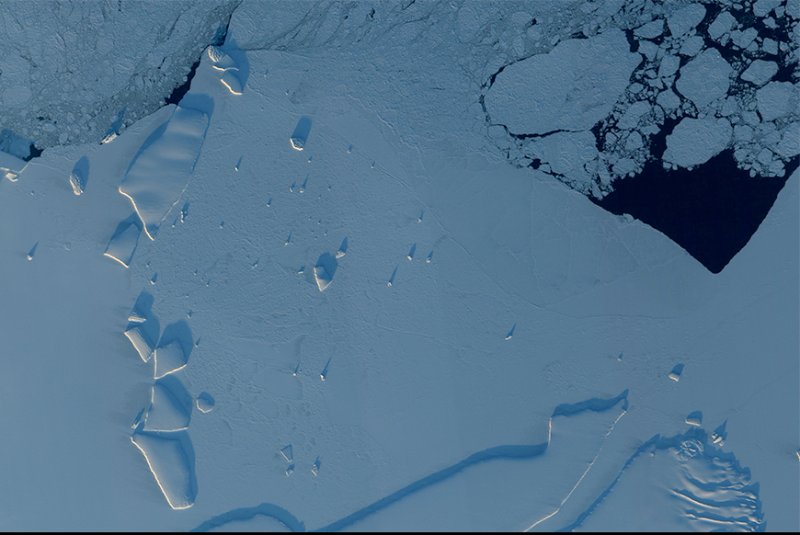Researchers say Antarctica's thinning outer glaciers are making inner ice sheets vulnerable to disintegration. The collapse of the West Antarctic ice sheet, which is roughly the size of Mexico, could trigger twice as much sea level rise as the latest predictions by the UN. Photo by NASA/UPI
STATE COLLEGE, Pa., March 31 (UPI) -- New research suggests previous sea level rise predictions err on the conservative side.
In a paper published this week in the journal Nature, scientists argue that the continued collapse of the West Antarctic ice sheet will accelerate sea level rise at nearly twice the rate predicted by the United Nations.
The latest report published by the U.N. Intergovernmental Panel on Climate Change predicts sea levels will rise one meter, or 3.2 feet, by the end of the century. Scientists Rob deConto and David Pollard, from Penn State University, say sea levels are more likely to rise upwards of two meters, or 6.5 feet, by 2100.
The West Antarctic ice sheet sits below sea level. Researchers liken it to a big bowl, its center surrounded by smaller, higher ice sheet that insulate it from the ocean. But warming ocean water is quickly melting those protective glaciers. Scientists say the West Antarctic ice sheet is increasingly vulnerable to disintegration.
Because Arctic ice sheets are mostly floating, their melting doesn't affect sea levels as dramatically. Antarctica boasts more grounded ice sheets. Should they melt and slide into the ocean, sea level rise will be swift.
"Although the future sea-level contribution in our model is greater than previously thought, it is based on credible mechanisms and is consistent with geologic evidence of past sea-level rise," Pollard, senior scientist at Penn State's Earth and Environmental Systems Institute, said in a press release. "We regard the results as worst-case envelopes of possible future behavior, and the mechanisms should be considered seriously in future work."
The work was aided by a sophisticated model used to simulate the interplay between rising temperatures, warming ocean waters and polar ice melting. However, researchers were troubled by the model's inability to properly recreate sea level rise scenarios from Earth's past.
"Recently we looked at the long-standing problem posed by geological evidence that suggests sea level rose dramatically in the past, possibly up to 10 to 20 meters around 3 million years ago in the Pliocene," said David Pollard. "Existing models couldn't simulate enough ice sheet melting to explain that."
By taking a closer look at how ice melting will affect Antarctica's inner ice sheets, Pollard and deConto were able to resolve the model's discrepancies and reveal the likelihood of more aggressive sea level rise.















